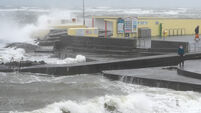Middle-class comforts or total collapse forecast for 2030
That is the best-case scenario in the report Global Trends 2030, released by the US government’s National Intelligence Council.
In the worst-case scenario, the rising population leads to conflict over water and food, especially in the Middle East and Africa, and the instability contributes to global economic collapse.













